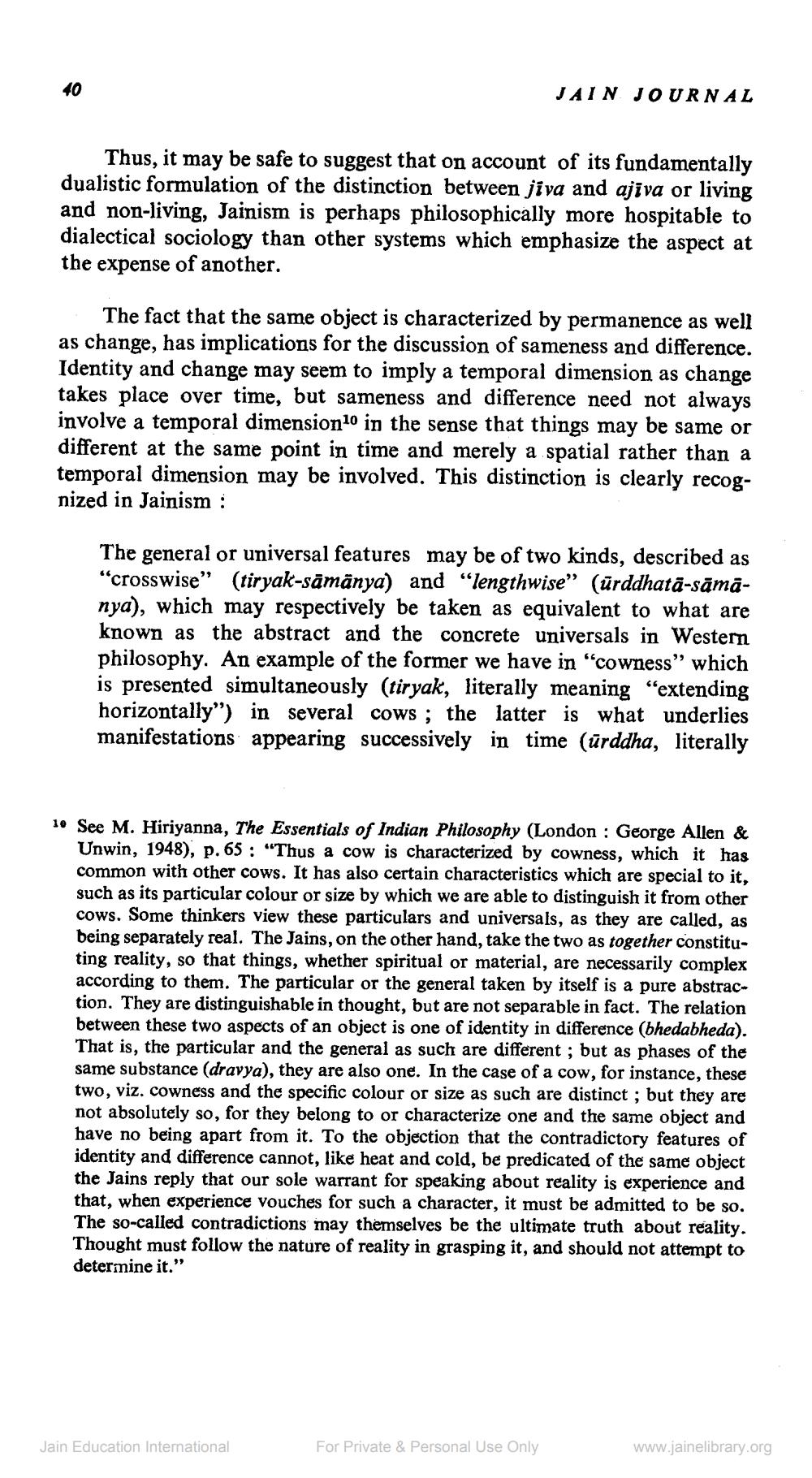Book Title: Jain Journal 1989 10 Author(s): Jain Bhawan Publication Publisher: Jain Bhawan Publication View full book textPage 6
________________ JAIN JOURNAL Thus, it may be safe to suggest that on account of its fundamentally dualistic formulation of the distinction between jiva and ajiva or living and non-living, Jainism is perhaps philosophically more hospitable to dialectical sociology than other systems which emphasize the aspect at the expense of another. The fact that the same object is characterized by permanence as well as change, has implications for the discussion of sameness and difference. Identity and change may seem to imply a temporal dimension as change takes place over time, but sameness and difference need not always involve a temporal dimension10 in the sense that things may be same or different at the same point in time and merely a spatial rather than a temporal dimension may be involved. This distinction is clearly recognized in Jainism : The general or universal features may be of two kinds, described as "crosswise” (tiryak-sāmānya) and "lengthwise" (ürddhatā-sāmānya), which may respectively be taken as equivalent to what are known as the abstract and the concrete universals in Western philosophy. An example of the former we have in "cowness" which is presented simultaneously (tiryak, literally meaning "extending horizontally'') in several cows; the latter is what underlies manifestations appearing successively in time (ürddha, literally 18 See M. Hiriyanna, The Essentials of Indian Philosophy (London: George Allen & Unwin, 1948), p. 65: "Thus a cow is characterized by cowness, which it has common with other cows. It has also certain characteristics which are special to it, such as its particular colour or size by which we are able to distinguish it from other cows. Some thinkers view these particulars and universals, as they are called, as being separately real. The Jains, on the other hand, take the two as together constituting reality, so that things, whether spiritual or material, are necessarily complex according to them. The particular or the general taken by itself is a pure abstraction. They are distinguishable in thought, but are not separable in fact. The relation between these two aspects of an object is one of identity in difference (bhedabheda). That is, the particular and the general as such are different ; but as phases of the same substance (dravya), they are also one. In the case of a cow, for instance, these two, viz. сowness and the specific colour or size as such are distinct ; but they are not absolutely so, for they belong to or characterize one and the same object and have no being apart from it. To the objection that the contradictory features of identity and difference cannot, like heat and cold, be predicated of the same object the Jains reply that our sole warrant for speaking about reality is experience and that, when experience vouches for such a character, it must be admitted to be so. The so-called contradictions may themselves be the ultimate truth about reality. Thought must follow the nature of reality in grasping it, and should not attempt to determine it." Jain Education International For Private & Personal Use Only www.jainelibrary.orgPage Navigation
1 ... 4 5 6 7 8 9 10 11 12 13 14 15 16 17 18 19 20 21 22 23 24 25 26 27 28 29 30 31 32 33 34 35 36 37 38
